#bahai
Text
I run a discord server called Garden of Eden. It has 400+ members. It's a general religion and spirituality server for all people and faiths, mainly for discussions and community rather than debate. We watch shows, and anime, play games, share art, talk about stuff unrelated to religion, and so on. Everyone is welcome, no matter their faith or background. We have a friendly community and love getting new members, so please message me or reply to the post if you want to join.
(If you just like the post without messaging or replying, I won't assume you want a link.)
#religion#christianity#islam#judaism#buddhism#hinduism#satanism#paganism#spirituality#wicca#witchcraft#witch#discord server#discord#hellenism#heathenry#religio romana#sikhism#jainism#bahai#animism#kemetism#celtic#mythology#shinto
28 notes
·
View notes
Text
On This Day In History
May 23rd, 1844: Declaration of the Báb, Báb declares himself a Prophet and starts a faith, Bábism, that will become the forerunner to the Baháʼí Faith.
45 notes
·
View notes
Text
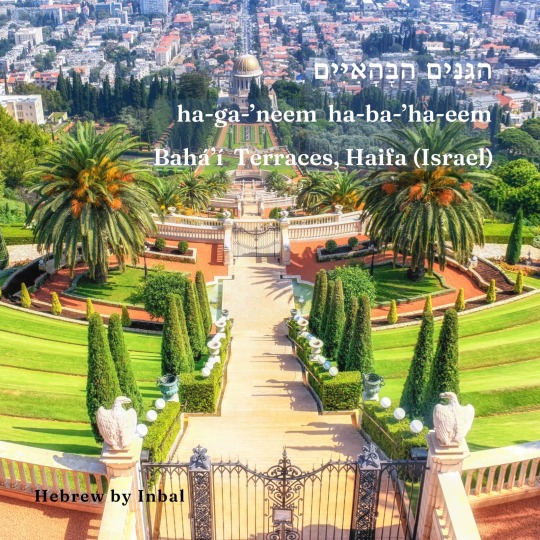
Amidst the bustling cityscape of Haifa, the Baháʼí Terraces offer not just a breathtaking sight but also a profound symbol of the pluralism and religious freedom that enriches Israeli society.
These terraced gardens gracefully ascend Mount Carmel, representing more than just an architectural marvel; they embody the essence of the Baháʼí faith – unity and peace.
The Baháʼí faith, with its roots in the 19th-century Persia, found its spiritual and administrative home in Haifa.
The Terraces, surrounding the Shrine of the Báb, one of the faith’s central figures, is not only a place of pilgrimage but also a beacon of inclusivity and harmony.
The meticulously manicured gardens, with 19 terraces extending up the northern slope of Mount Carmel, are a visual representation of the Baháʼí teachings about the unity of humanity and the integration of nature and spirituality.
This sacred site is more than just a religious landmark; it’s a testament to the diverse fabric of Israeli society.
Israel, a land revered by many faiths, stands as a unique mosaic of cultures and beliefs.
The existence and preservation of the Baháʼí Terraces in Haifa exemplify Israel’s commitment to religious freedom and respect for different faiths.
In a region often marred by religious and cultural conflicts, the Terraces shine as a symbol of coexistence and mutual respect.
The beauty of the Terraces is not only in their stunning gardens and architectural excellence but also in their message.
They speak to the possibility of a society where different religions and cultures can coexist peacefully, each contributing to the rich tapestry of the nation.
As visitors walk through these gardens, they witness the serene power of unity and the importance of preserving such spaces that celebrate diversity and encourage dialogue.
In a world where religious freedom is not a given, the Baháʼí Terraces in Haifa stand as a proud reminder of what can be achieved when a society embraces pluralism and mutual respect.
They are not just a jewel in Israel’s crown but a beacon of hope, showing the way towards a more inclusive and harmonious world.
10 notes
·
View notes
Text
man i wish i cld see canonically bahai characters in tv shows someday
#bahai#i was on wilipedia looking at bahai faith in media and the short list of bahai characters including like#a brief (4 minute) scene (with timestamps) from one episode of a show#i dunno i just feel like the screen is getting more diverse which is wonderful and makes me so happy#and i was just thinking i would really enjoy seeing a bahai character#i was raised bahai lol and often it feels like the least important aspect of my identity but it is important to me ngl
12 notes
·
View notes
Text
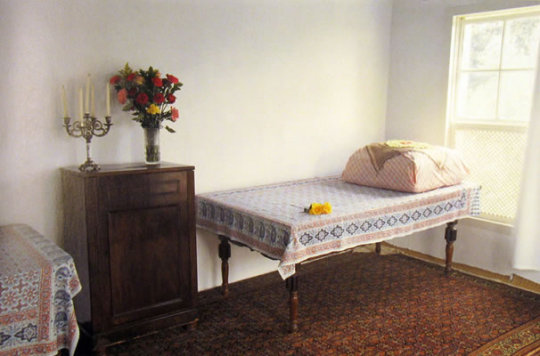
The room of Bahá’u’lláh at the Ridván Garden as it looks today.
During one period, Bahá’u’lláh stayed at the Ridván Garden for nine days, meeting with the pilgrim groups that came out each day from ‘Akká to see Him.
In 1881, the Ridván Garden was purchased for Bahá’u’lláh. Pilgrims still go to the little house there for prayer and meditation.
(Photograph: Baha'i International Community)
25 notes
·
View notes
Text
Happy Naw-Rúz!

16 notes
·
View notes
Text
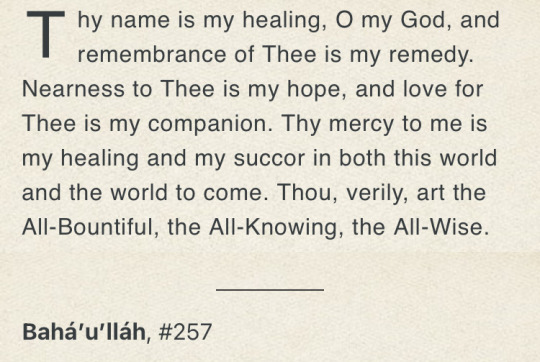
2 notes
·
View notes
Photo
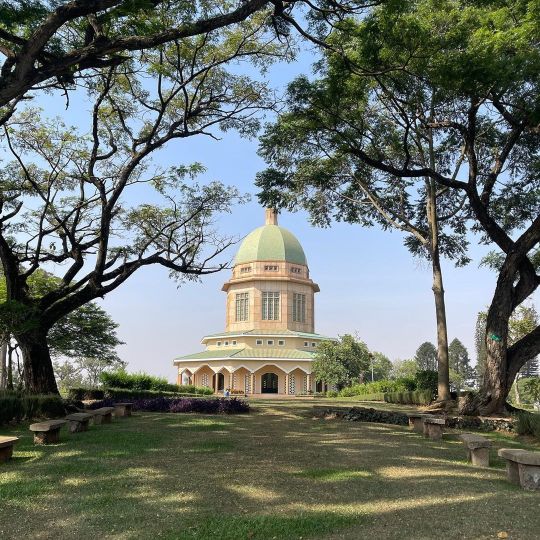
The first Bahá’í House of Worship on the African continent, completed in 1961, is in Kampala, Uganda and has become a well-known landmark. Bahá’í Houses of Worship are spiritual gathering places open to all peoples. It was far from easy to get here. I took a bus from Kenya to Uganda over night, with multiple delays and had to switch hotels three times. But I was able to make it and listen to prayers and choir and meet locals. The stories have been touching and at times funny. One story was the Ugandans were skeptical of the Temple and rumored it had ghosts. There are no ghosts, but it is a very spiritual and peaceful place to visit so please go if you can. #bahai #bahaitemple #bahaihouseofworship #Uganda #kampala #africa #solofemaletravel #solotravel #travel #sightsee #femaletraveler #travelblog #nofilter #nofilterneeded (at Bahá'í House of Worship - Uganda) https://www.instagram.com/p/Co4bSsVtZcg/?igshid=NGJjMDIxMWI=
#bahai#bahaitemple#bahaihouseofworship#uganda#kampala#africa#solofemaletravel#solotravel#travel#sightsee#femaletraveler#travelblog#nofilter#nofilterneeded
15 notes
·
View notes
Photo

103.) My Baha’i Gardens sweater. Made for my 2016 trip there. #sambarsky #sambarskysweaters #sambarskyknitter #knit #knitting #knitter #art #artist #sweater #intarsia #handknit #bahaigardens #bahaígardens #bahai #bahaí #haifa #israel #haifaisrael #geranium #geraniums (at Bahai Garden Haifa,Israel) https://www.instagram.com/p/CqEN-FZv4pi/?igshid=NGJjMDIxMWI=
#sambarsky#sambarskysweaters#sambarskyknitter#knit#knitting#knitter#art#artist#sweater#intarsia#handknit#bahaigardens#bahaígardens#bahai#bahaí#haifa#israel#haifaisrael#geranium#geraniums
15 notes
·
View notes
Text
Another Violation of the Rights of Bahais in Iran
In this post, I provided some articles discussing a few of the many human rights abuses inflicted upon minorities in Iran, including Bahais. As a followup, here is yet another example of the cruel treatment of Bahais. On top of the stress and trauma of the loss of a loved one, people must be subjected to further pain by being barred from holding a proper burial. It's so heartbreaking.
SOURCE
#free iran#freedom for iran#woman life freedom#women life freedom#iran revolution#iran protests#human rights#bahai#religion#mahsa amini
12 notes
·
View notes
Text
Many members of the Baha'i religious minority have been arrested across Iran in recent weeks amid unabated nationwide protests. Some were detained at their homes while others were rounded up with other protesters in the streets. Like many of the arrested demonstrators, these Baha’is have been locked up behind bars without specific charges and haven’t been allowed to meet with their families. (...)
43 Years of Harassment and Persecution
Members of the Baha’i community are among the most persecuted groups in Iran. From the very first days following the victory of the 1979 Islamic Revolution, they have been violently harassed by the Islamic Republic and its lackeys. The properties and the homes of many Baha’is were confiscated, their cemeteries in all Iranian cities were seized and destroyed, and Baha’i villagers were driven out of their ancestral lands.
The homes and the livestock of many of these villagers were set on fire, and some of the elderly villagers were killed by setting them ablaze. Baha’is were expelled from all government positions, academics were kicked out of educational institutions, and students were banned from higher education.
During the Iran-Iraq war in the 1980s, Baha’is served in the military, just like their fellow Iranians. A large number of them were killed, sustained serious injuries or became prisoners of war, but the Islamic Republic has not recognized any of them as “martyr,” POW or war wounded soldier, and their names were removed from the lists of the Martyrs Foundation.
For more than a decade, Baha’is have been banned from leaving Iran and none of them have been given a passport. Over the past 43 years, more than 200 followers of the Baha’i faith have been murdered and executed by the Islamic Republic. Thousands of them have served prison time because of their faith.
During the ongoing protests, security agents of the Islamic Republic have killed a number of children, but for the Baha’is that’s not something new. Forty years ago, on June 18, 1983, Mona Mahmoudnejad, a 16-year-old Baha’i girl, was executed by hanging in the southern city of Shiraz just for refusing to convert to Islam. Babak Talebi and Payman Sobhani are among other Baha’i children who have been murdered in Iran.
Persecuting the Baha’is as a Mean to Silence Protests
Misleading public opinion is one of the methods that the Islamic Republic has consistently used whenever it has been challenged by protests. In the early days of the current wave of demonstrations, the Iranian government once again resorted to this tactic to mislead public opinion and sow divisions among protesters.
In a statement on September 30, the Intelligence Ministry claimed that Baha’is “have had an extensive presence on the scenes of unrest and riots,” using this fallacious excuse to arrest three Baha’i leaders and two members of their communication team.
To back its claim, the Intelligence Ministry created fake Twitter accounts and sent messages bearing the logo of the London-based, Persian-language Iran International TV channel. In these posts, Baha’is were supposedly calling on people to take to the streets on October 14 and 15. (...)
#💬#iran#baha'i faith#baha'i#bahai#islamic republic vs iran#iran protests#human rights#middle east#death tw#police brutality tw
30 notes
·
View notes
Text
Happy Ayyám-í-Há to anyone else who celebrates!!
(and good luck with the fast!!)
11 notes
·
View notes
Text
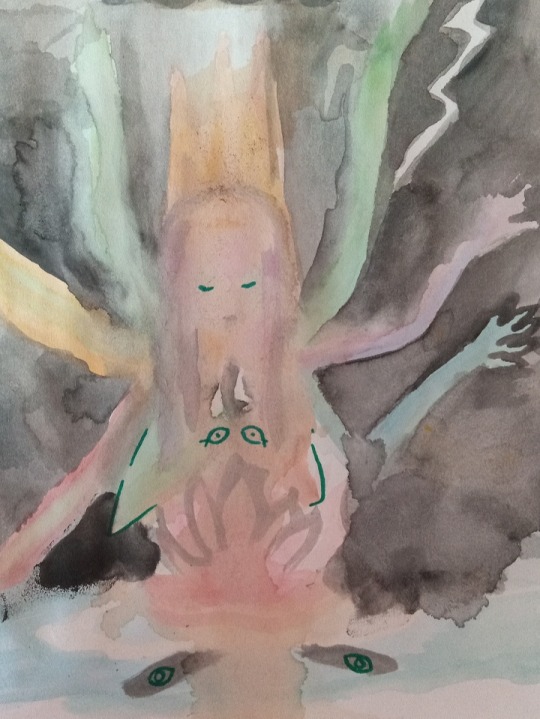
3 notes
·
View notes
Quote
Suffering is both a reminder and a guide. It stimulates us better to adapt ourselves to our environmental conditions, and thus leads the way to self-improvement. In every suffering one can find a meaning and a wisdom. But it is not always easy to find the secret of that wisdom. It is sometimes only when all our suffering has passed that we become aware of its usefulness.
Shoghi Effendi
21 notes
·
View notes
Text

Presepada 2022: Bruxas, alquimistas e símbolos esotéricos e mágicos na anti-natividade usual de Bergoglio
Por Cláudio Tsuyoshi Suenaga
“Também neste ano, a falsa igreja anti-papal de Bergoglio propôs o usual anti-presépio com elementos esotéricos, pagãos, heréticos, mágicos e anticristãos inseridos furtivamente. Este é o preço a pagar quando o verdadeiro Papa não é defendido e um eclesiástico sem o múnus petrino, a investidura papal de origem divina, é deixado a ocupar o cargo de Romano Pontífice.” (Andrea Cienci in Quotidiano Libero, 04–12–2022)
Em 3 dezembro, enquanto o mundo se embevecia com o início das oitavas de final da Copa “Ouroboros/Fita de Möbius” pontilhada por profusões de olhos de Hórus, pirâmides Illuminati e símbolos reptilianos, mais uma vez a falsa igreja do maçom Jorge Mario Bergoglio não decepcionava ao contrário de muitas seleções no Qatar. Como já é de praxe, e dando continuidade à série iniciada em 2020 com o “Presépio Darth Vader” ou “Deuses Astronautas”, seguido pelo “Presépio Pachamama” do ano passado, o Vaticano nos presentava com a inauguração na Praça São Pedro do “Presépio do Friuli”, repleto de elementos esotéricos, pagãos, mágicos e anticristãos.
Relembre os presépios “Darth Vader” e “Pachamama” aqui no blog:
Para quem ainda considera “inocente” e meramente de matiz “transcultural” e “inter-religiosa” a presença dessas deidades, lembro que a elas eram oferecidos sacrifícios humanos.
Feito de madeira de cedro da região de Sutrio, província de Udine, um dos “borgos” mais característicos de Carnia, uma zona histórico-geográfica na região italiana do Friuli, parte da região administrativa de Friuli-Veneza Giulia, o presépio deste ano evoca noções aparentemente inócuas, “politicamente corretas” e trivialmente demagógicas de ecossustentabilidade e valorização das tradições locais. O Vatican News, site oficial do Vaticano, faz questão de salientar que “as estátuas de madeira de cedro são esculpidas à mão” e como “provém do corte planejado por viveiristas que cuidam de jardins públicos ou privados, onde foram plantadas árvores de cedro há mais de cem anos, nenhuma árvore foi cortada para fazer o presépio”, que parece bem menos chocante e escandaloso do que os seus predecessores e até passa por algo tradicional à primeira vista, mas que na verdade, por trás, não fica atrás e mergulha até mais fundo em termos ocultistas, tanto que na própria matéria no site do Vaticano, o seu porta-voz Silvonei José escreve literalmente, sem qualquer remordimento: “Sutrio, no coração de Carnia, ostenta uma importante tradição no trabalho com madeira e todos os anos, em setembro, organiza um evento cultural chamado ‘Magia da Madeira’.”
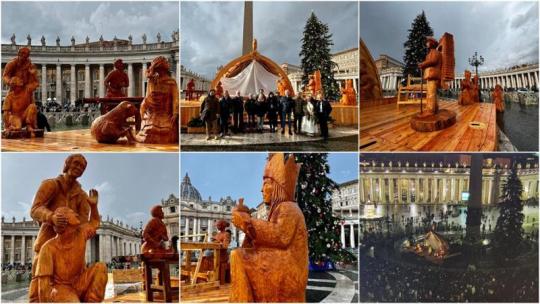
Friuli-Veneza, e mais propriamente Carnia, cercadas por zonas montanhosas confinadas entre a Áustria e a Eslovênia que as mantiveram muito isoladas, são tidas como uma “terra mágica-esotérica” onde sobreviveram uma língua ancestral e conhecimentos milenares e multiculturais de raízes pagãs, cujos rituais na época do Solstício de Inverno, como as grandes fogueiras epifânicas, ainda hoje se encenam como tradição local.

Mapa da região de Friuli-Venezia Giulia. Crédito: Slow Travel Tours.
O nome desta região consiste em duas partes: o nome de Friuli deriva do Fórum Iulii, o nome latino de Cividale del Friuli, capital do Ducado de Friuli a partir de 569. O nome de Venezia Giulia foi criado pelo linguista italiano Graziadio Isaia Ascoli (1829–1907) na segunda metade do século XIX para definir uma área disputada entre austríacos, italianos, eslovenos e croatas e submetido várias vezes a diferentes denominações e soberanias nas décadas anteriores e também para substituir (Küstenland), o nome com o qual os alemães denominavam a região.

Palmanova, cidade italiana cercada por muros da região de Friuli-Venezia Giulia, província de Udine, nordeste da Itália, com população de aproximadamente 5.344 habitantes. Construída pelos venezianos em 1593, a cidade tem um desenho simétrico em forma de estrela de 9 pontas, toda cercada por uma muralha contornada por um fosso, com apenas 3 portões de entrada. A construção do primeiro círculo levou 30 anos. A segunda fase da construção ocorreu entre 1658 e 1690, e a linha exterior de fortificações só foi concluída entre 1806 e 1813. Em 1960, Palmanova foi declarada um monumento nacional. Não foi por acaso que escolheram essa região que tem uma cidade em forma de estrela de 9 pontas, como veremos adiante. Foto: Cidades em Fotos.
Monia Montechiarini, uma jurista, especialista em direito e escritora que há mais de vinte anos está envolvido em pesquisa documental para reconstruir os julgamentos contra as bruxas, em seu livro Streghe, eretici e benandanti del Friuli Venezia Giulia. Processi, rituali e tradizioni di una terra magica (Bruxas, hereges e andarilhos de Friuli Venezia Giulia. Processos, rituais e tradições de uma terra mágica, Orvieto (Terni), Intermedia Edizioni, 2021), apurou vários casos de mulheres acusadas de bruxaria e heresia na região de Friuli Venezia Giulia.

Montechiarini reconstrói suas histórias e perfis criminais, ilustrando não apenas os dados legais, mas também as práticas e atividades mágicas subjacentes aos crimes: remédios de “ervas”, hostesses, parteiras, curandeiras, tempestare e seus feitiços de amor, magias propiciatórias e adivinhações com fogo. Relatos de possessões diabólicas e ressurreições temporárias em santuários marianos se alternam com diabas acorrentadas, invocações contra lobos e soldados “de coração sincero” nas grandes fortalezas construídas para defender a região.

Monia Montechiarini no Castelo de Toppo di Travesio, província de Pordenone, Itália. Foto de Ferdi Terrazzani.
Entre os personagens da natividade no presépio, destacam-se o “Cramar” e a “Tecelã”, esta em segundo plano, de pé atrás de um tear.
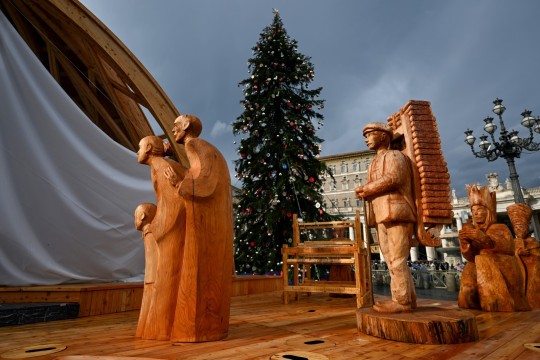
Vê-se aqui o Cramar, a tecelã ao fundo e uma família composta de três figuras (um homem, uma mulher e uma criança) que, unidos num abraço, estão de pé diante da Gruta. Os Três Reis Magos foram colocados ao longo da rampa que leva à Gruta.
O Cramar ou Cramaro, colocado em cena no seu caminho para a Natividade, era um mascate que, deixando sua aldeia a pé e carregando uma arca de madeira sobre seus ombros, uma espécie de mochila cheia de bolsinhos que circulava entre Veneza e o mundo eslavo-alemão, indo de aldeia em aldeia para vender os poucos produtos artesanais criados por sua comunidade. Ele geralmente era uma pessoa educada que sabia ler e fazer aritmética e negociava com especiarias e substâncias raras.
Elio Varutti, professor na Universidade de Trento, autor de inúmeras publicações sobre a história friulana, eleito em 2012 conselheiro honorário do Comitê Provincial de Udine da Associazione Nazionale Venezia Giulia Dalmazia (ANGVD), em seu artigo “Pedlars and Alchemists in Friuli: History of itinerant sellers in an alpine reality” [“Mascates e alquimistas em Friuli: História dos vendedores itinerantes em uma realidade alpina”, Udine (Italy), September 23, 2011], mostrou como os cramars muitas vezes, e de bom grado, praticavam a Alquimia, seja manipulando ervas e substâncias naturais que comercializavam ou derretendo metais em busca da pedra filosofal, tanto que alguns deles mais tarde se tornaram tocadores de sinos também em Ljubljana. Ao entrarem em contato com o mundo alemão, muitas vezes e voluntariamente absorveram outras cosmovisões, luteranas, não católicas e/ou mágico-esotéricas relacionadas a cultos pré-cristãos. Escreve Varutti: “Os vendedores ambulantes do Friuli, e principalmente os vendedores de especiarias e fragrâncias do passado, eram verdadeiros alquimistas, pois produziam medicamentos para a cura do corpo, como pomadas, emplastros, cremes e pós.”
As mulheres em Carnia, quase todas tecelãs, eram depositárias de conhecimentos antigos, um dos quais era a arte mágica de amarrar ou desamarrar. Além de exímias na arte da tecelagem, eram profundas conhecedoras dos nós, tanto que deixaram manuais nas famílias para que passassem essas habilidades.
O escritor Paolo Paron, outro importante estudioso das tradições friulianas, diz que essas mulheres conheciam as propriedades das plantas, das essências e também dos ciclos lunares, dos tempos de colheita. Essa “cultura médica” transmitida de mulher para mulher através de gerações, desde o paganismo, só podia ser transmitida na noite da véspera de Natal, uma noite tão mágica quanto a de São João, em 24 de junho. Paron informa também como as antigas curandeiras de Carnia agem medindo, amarrando, desfiando faixas, cintos, fitas, ataduras, laçadas, cordões, franjas, fios e cordões. Praticavam a “magia dos nós”, explorando ao máximo o espaço ambivalente existente entre as polaridades de amarrar/desamarrar, a prática de medir/remedir nós, e ao mesmo tempo, como meio de defesa contra os feitiços alheios.
Portanto, o que está por trás do presépio de 2022 na Praça de São Pedro é toda a parafernália anticatólica usual do Bergoglianismo: Sincretismo, Neoluteranismo, Neoarianismo, Neognosticismo, Neopaganismo, Noachismo, tudo misturado a um mortal coquetel de heresias e apostasias. A Igreja Bergogliana favorece o “despertar dos mágicos”, o ressuscitar das feiticeiras e bruxas, os cultos pré-cristãos ligados a Grande Mãe, a Mãe Terra, a união dos opostos, o “saber” alquímico e a cura do corpo, mesmo que à custa da danação da alma.

Aqui se vê a pastora, que simboliza a montanha que fornece alimento para os animais com seus recursos. A pastora é colocada de joelhos com duas ovelhas a seu lado e uma “gerla”, a cesta típica da montanha. Há também duas figuras simbólicas: um homem ajuda o outro a se levantar para caminhar de volta para a Gruta. É um lembrete da solidariedade que é especialmente praticada em ambientes como a montanha.
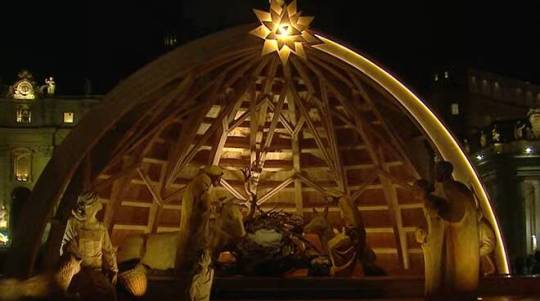
O Presépio de Sutrio é inteiramente feito de madeira “ecológica”, com uma semiesfera que atua como uma gruta, onde é exibida a Sagrada Família, em torno da qual são colocados personagens em tamanho real.
Para completar, no topo da cúpula do presépio está uma estrela de nove pontas, o símbolo Bahá’í, que reflete a importância do número para a Fé. O número nove é o número de um dígito mais alto, simboliza a conclusão e o cumprimento das expectativas de todas as religiões anteriores. A estrela é frequentemente retratada nos templos Bahá’í, que têm nove lados. O Santuário Bahá’í fica em Haifa, a maior cidade do norte de Israel. Como já me referi, Palmanova, a cidade italiana cercada por muros da região de Friuli-Venezia Giulia, província de Udine, tem um desenho simétrico em forma de estrela de 9 pontas, em conexão com essa estrela de Bahá’í.

E o que é a fé Bahá’í? Fundada por Bahá’u’lláh (1817-1892) na Pérsia, a mais jovem das grandes religiões mundiais, é uma religião monoteísta que enfatiza a união espiritual de toda a humanidade. Três princípios básicos estabelecem a base para os ensinamentos bahá’ís: a unidade de Deus, que há apenas um Deus que é a fonte de toda a criação; a unidade da religião, que todas as maiores religiões têm a mesma fonte espiritual e partem do mesmo Deus; e a unidade da humanidade, que todos os seres humanos foram criados igualmente e que a diversidade racial e cultural deve ser apreciada e aceita. Em outras palavras, a fé Bahá’í é o modelo da religião mundial preconizada pela Nova Ordem Mundial e promovida aberta e intensamente pelo Papa Francisco, em detrimento da própria fé e doutrina católicas.

Este artigo foi baseado no do historiador da arte, jornalista e escritor italiano Andrea Cienci, “Alchimisti, fattucchiere e magia dei nodi. L’anti presepe 2022 di Bergoglio in Vaticano”, publicado no blog Quotidiano Libero em 4 de dezembro:
Leia esta matéria no Medium:
Não deixem de prestigiar a exposição do Frei Tiago São José sobre o “PRESÉPIO ESCANDALOSO ANTI-CRISTÃO NO VATICANO” em seu Canal Monte Carmelo no YouTube:
youtube
#vaticano#bahai#presepio#papa francesco#bergoglio#igreja católica#natal#natal2022#heresia#bruxaria#alquimia#paganism#esoterismo#carnia#friuli#Youtube
13 notes
·
View notes
Text
about Meditation, from Paris talks
Bahá’u’lláh says there is a sign (from God) in every phenomenon: the sign of the intellect is contemplation and the sign of contemplation is silence, because it is impossible for a man to do two things at one time—he cannot both speak and meditate.
It is an axiomatic fact that while you meditate you are speaking with your own spirit. In that state of mind you put certain questions to your spirit and the spirit answers: the light breaks forth and the reality is revealed.
You cannot apply the name “man” to any being void of this faculty of meditation; without it he would be a mere animal, lower than the beasts.
Through the faculty of meditation man attains to eternal life; through it he receives the breath of the Holy Spirit—the bestowal of the Spirit is given in reflection and meditation.
The spirit of man is itself informed and strengthened during meditation; through it affairs of which man knew nothing are unfolded before his view. Through it he receives Divine inspiration, through it he receives heavenly food.
Meditation is the key for opening the doors of mysteries. In that state man abstracts himself: in that state man withdraws himself from all outside objects; in that subjective mood he is immersed in the ocean of spiritual life and can unfold the secrets of things-in-themselves. To illustrate this, think of man as endowed with two kinds of sight; when the power of insight is being used the outward power of vision does not see.
This faculty of meditation frees man from the animal nature, discerns the reality of things, puts man in touch with God.
This faculty brings forth from the invisible plane the sciences and arts. Through the meditative faculty inventions are made possible, colossal undertakings are carried out; through it governments can run smoothly. Through this faculty man enters into the very Kingdom of God.
8 notes
·
View notes